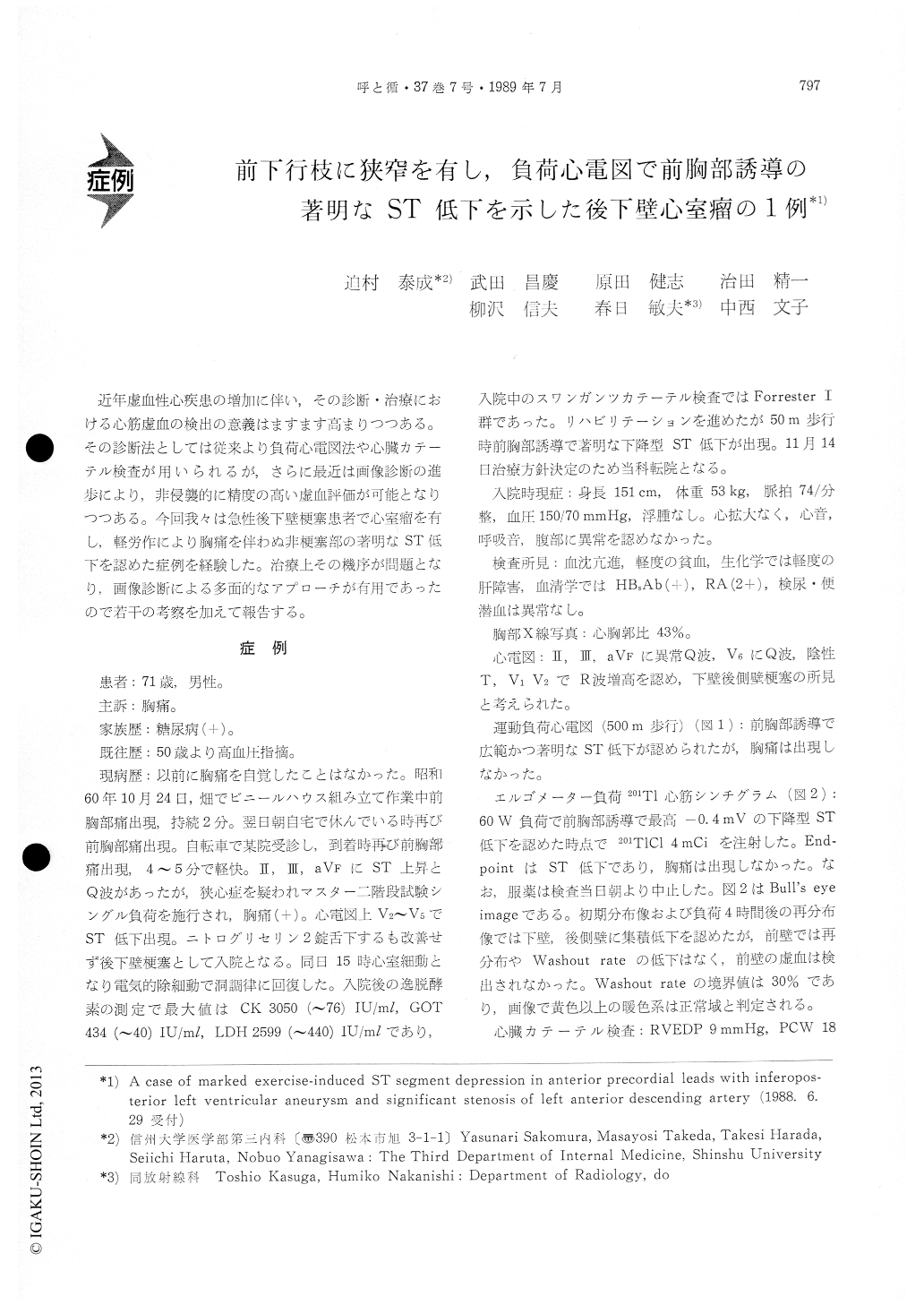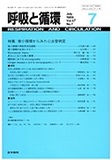Japanese
English
- 有料閲覧
- Abstract 文献概要
- 1ページ目 Look Inside
近年虚血性心疾患の増加に伴い,その診断・治療における心筋虚血の検出の意義はますます高まりつつある。その診断法としては従来より負荷心電図法や心臓カテーテル検査が用いられるが,さらに最近は画像診断の進歩により,非侵襲的に精度の高い虚血評価が可能となりつつある。今回我々は急性後下蟹梗塞患者で心室瘤を有し,軽労作により胸痛を伴わぬ非梗塞部の著明なST低下を認めた症例を経験した。治療上その機序が問題となり,画像診断による多面的なアプローチが有用であったので若干の考察を加えて報告する。
A 71-year-old man was admitted to a community hospital and diagnosed as having acute infero-posterior myocardial infarction. Severe ST segment depression occurred in anterior precordial leads with only 50 m walking, but he had no chest pain. He was then admitted to our hospital. Left ventriculo-graphy showed infero-posterior dyskinesis and aneu-rysm formation. Coronary angiography revealed tripple-vessel disease including 90% stenosis at distal site of left anterior descending artery. Execise thal-lium-201 myocardial scintigraphy by ergometer showed no filling defect in the anterior segment, though severe ST depression appeared in anterior precordial ECG leads. Infero-posterior segment showed persistent defect. We performed intravenous digital ventriculography at rest and during atrial pacing. Anterior wall motion during pacing was shown to be normal by amplitude and phase ana-lysis. At the same time, the motion of the inferior wall was seen as abnormal and ST segment depres-sion on anterior precordial leads appeared. We con-sidered that in this case the anterior ST depression did not mean anterior myocardial ischemia but might be due to dyskinetic movement of the infero-posterior aneurysm.

Copyright © 1989, Igaku-Shoin Ltd. All rights reserved.


